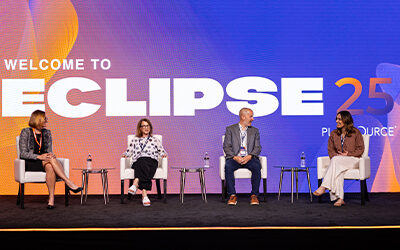Liz Dillon
HRIS and HCM and Ben Admin—oh my! With so many HR acronyms flying around, it can be difficult to understand the nuances between different software solutions and to find the best fit for your individual company. But don’t worry, we’re here to help!
In this jargon-free guide, we’ll cover the basics behind HR software terms and give you the link for a complete, unbiased HR software buyer’s guide to help you make an informed decision.
Keep in mind that there are almost 20 categories of HR software, which can be overwhelming to say the least. There are solutions for the broad human capital management and niche offerings for recruiting, engagement, payroll, compensation, communication, and much more. In this guide, we’ll focus on HR management from a benefits perspective and highlight solutions specific to benefits administration.
What is HRIS?
‘HRIS’ is an acronym for ‘Human Resources Information System’.
The most basic of the HR platforms we’ll explore here, an HRIS platform allows users to electronically track, manage and automate core human resources functions, including information related to your workforce, policies and procedures.
As a ‘core’ HR software, HRIS handles the basic necessities of running a human resources department.
Features included in an HRIS platform often include:
- Payroll – calculate employee wages and salaries, deduct the correct amount for benefits and taxes, and print checks or execute direct deposits
- Attendance and Time Tracking – track employees’ working hours and monitor employee absences related to vacation days, sick days, etc.
- Recruiting – automate the posting of job opportunities, receive and communicate online applications, tracking candidate interviews and the hiring process
- Onboarding – automate information submission and storage, provide employees easy access to training materials and team information
- Personnel Tracking – manage a digital roster of company employees (job title, contact info, personal details, etc.)
- Benefits Administration – enroll employees in company benefits such as health insurance and 401(k) savings, and track and automate compliance
HRIS platforms vary in scope and may include only one or up to all five of these core features.
While an HRIS platform might meet the needs of very small employers (100 or fewer employees), a more customizable and feature-rich solution is often the best approach to handle complex HR and benefits requirements.
Synonyms: HRMS (human resources management system), HRM, HRMIS, Core HR
Examples: BambooHR, Namely, Rippling
What is HCM?
‘HCM’ stands for ‘human capital management’, and this technology adds the ‘human capital’ element into what a typical HRIS platform will offer. Meaning, the system has the capability to manage the entire employee lifecycle from recruiting and hiring to management, engagement and development.
In addition to the feature set of an HRIS, HCM systems typically include features for:
- Talent Management – recruiting, onboarding, performance management, compensation planning, learning and development and more
- Labor and Workforce Management – Time off and attendance tracking, absence management, task management, forecasting, scheduling and more
- Company Data – hosting company policy and procedure data, document management, organizational knowledge base and more
- Administrative Functions – managing employee and organizational data, benefits and payroll administration, and more
- Advanced Reporting and Analytics – in-depth reports, dashboards and graphics to help HR teams make data-driven decisions
Essentially, you can think of HCM platforms as a ‘jack of all trades’. They typically offer one really strong core competency, like payroll or time and attendance, with several other not as strong features—like benefits enrollment. This is why many HCM providers integrate and/or partner with other third-parties to provide a better, more feature-rich experience in specific areas, like benefits administration.
Synonyms: People management, talent management, workforce optimization, strategic HR
Examples: UKG, Oracle, ADP

Empathy, Innovation & Action: Top Takeaways from HR Leaders Who Spoke at Eclipse
Empathy, Innovation & Action:Top Takeaways from the HR Leaders Who Spoke at...
Charting the Future of PlanSource: Our Vision for What’s Ahead
Discover how PlanSource unveiled game-changing AI innovations at Eclipse 2025, transforming how HR leaders manage benefits and how employees choose them. The future of benefits starts here.
Navigating New Requirements with the Paperwork Burden Reduction Act
Navigating New Requirements with the Paperwork Burden Reduction...




